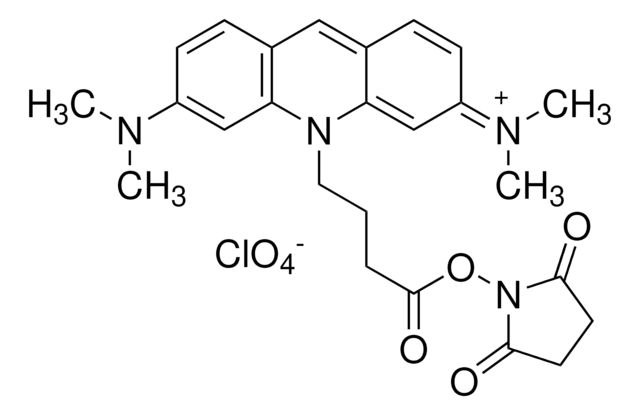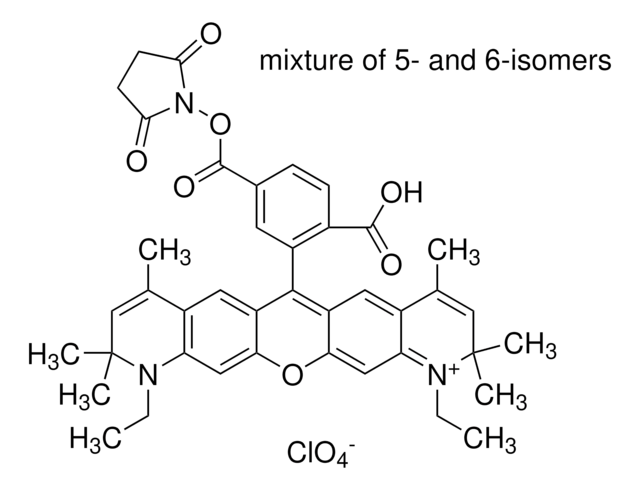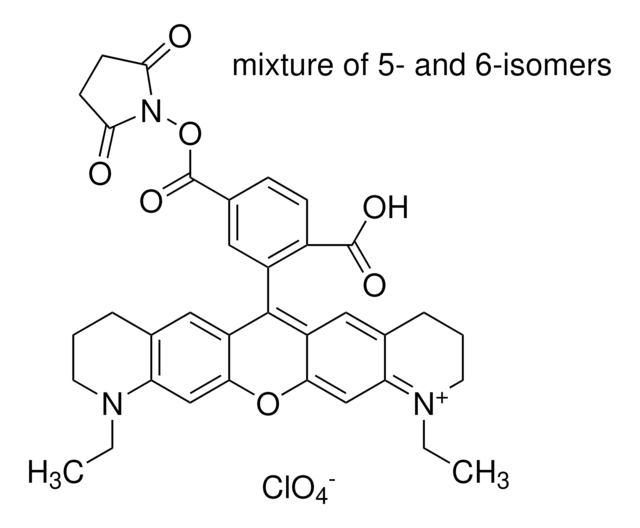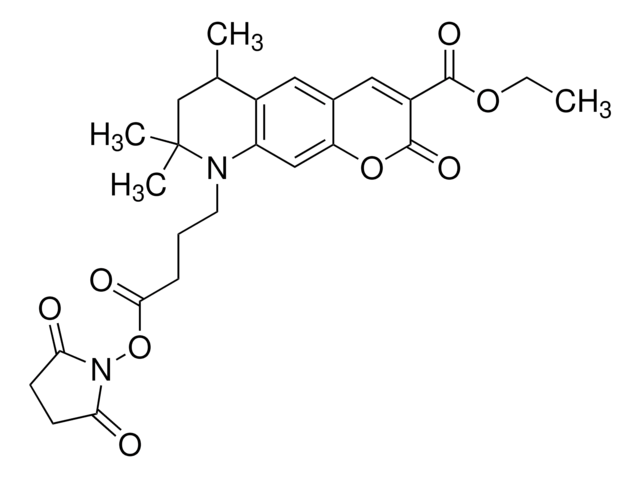Recommended Products
assay
90% (Coupling efficiency with benzylamine, HPLC)
Quality Level
form
solid
mol wt
Mw 1111 g/mol
manufacturer/tradename
ATTO-TEC GmbH
transmittance
254 nm
514 nm
fluorescence
λex 511 nm; λem 533 nm±10 nm in PBS, pH 7.4
λ
(water/methanol with 0.1% perchloric acid)
suitability
suitable for fluorescence
storage temp.
−20°C
General description
Atto 514 is a new hydrophilic fluorescent label with excellent water solubility. The dye exhibits strong absorption, high fluorescence quantum yield and exceptional thermal and photo-stability. Thus Atto 514 is highly suitable for single-molecule detection applications and high-resolution microscopy such as PALM, dSTORM, STED etc. Additionally the dye highly qualifies to be applied in flow cytometry (FACS), fluorescence in-situ hybridization (FISH) and many more. The fluorescence is excited most efficiently in the range 510 - 535 nm. A suitable source of excitation is the 514 nm line of the Argon-Ion laser.
find more information here
find more information here
Legal Information
This product is for Research use only. In case of intended commercialization, please contact the IP-holder (ATTO-TEC GmbH, Germany) for licensing.
Storage Class
11 - Combustible Solids
wgk_germany
WGK 3
flash_point_f
Not applicable
flash_point_c
Not applicable
Choose from one of the most recent versions:
Already Own This Product?
Find documentation for the products that you have recently purchased in the Document Library.
Hsin-Yi Hsieh et al.
ACS nano, 13(4), 4486-4495 (2019-03-12)
Interest in developing a rapid and robust DNA sequencing platform has surged over the past decade. Various next-/third-generation sequencing mechanisms have been employed to replace the traditional Sanger sequencing method. In sequencing by synthesis, a signal is monitored by a
Our team of scientists has experience in all areas of research including Life Science, Material Science, Chemical Synthesis, Chromatography, Analytical and many others.
Contact Technical Service




